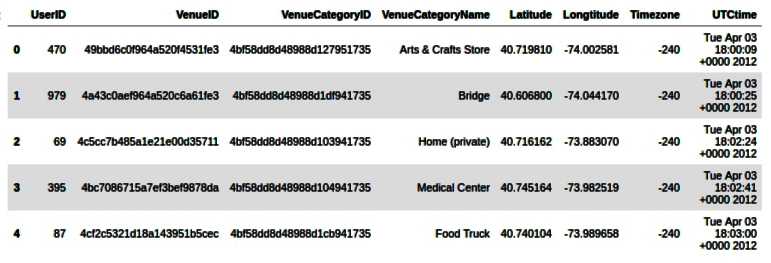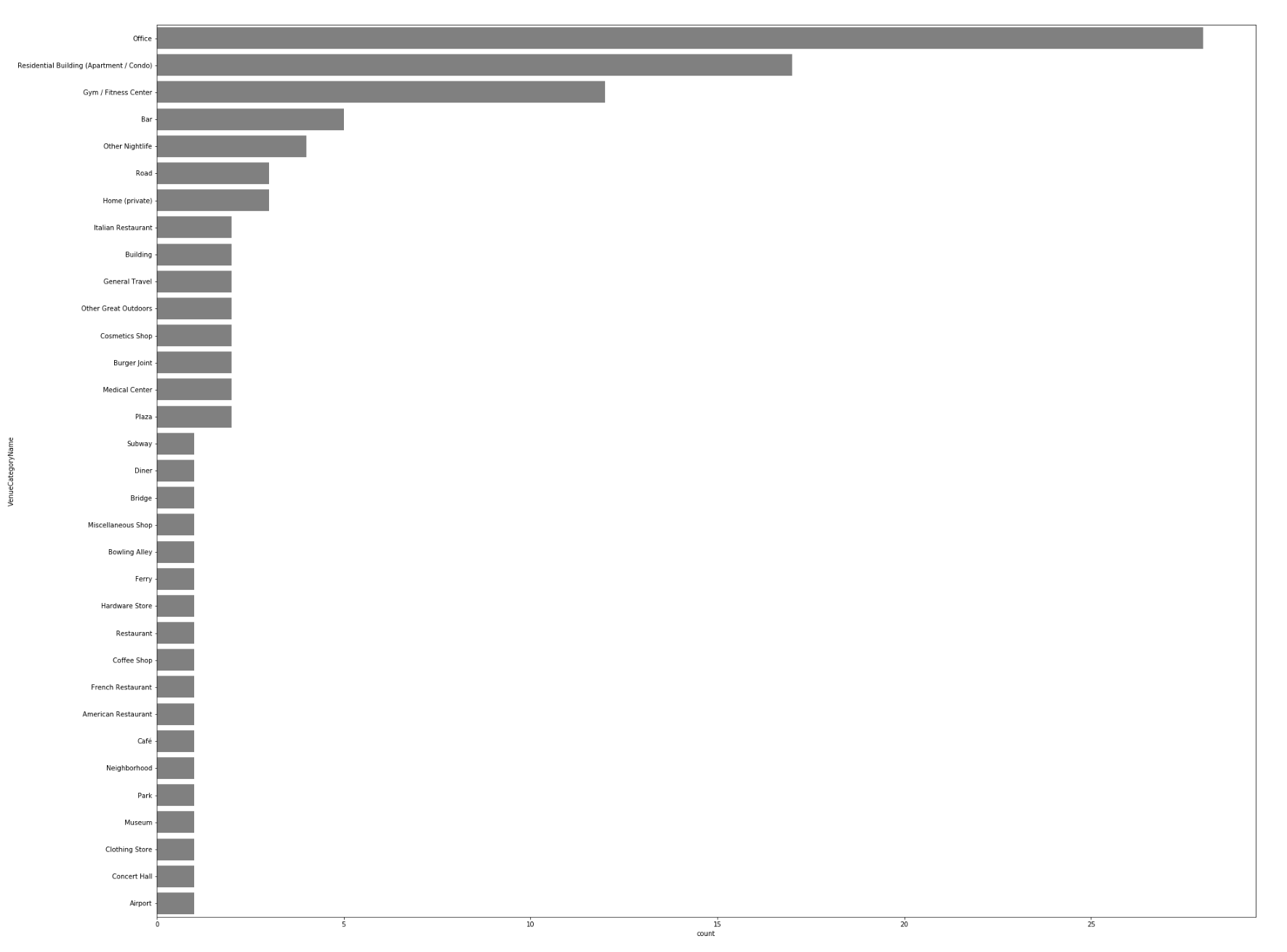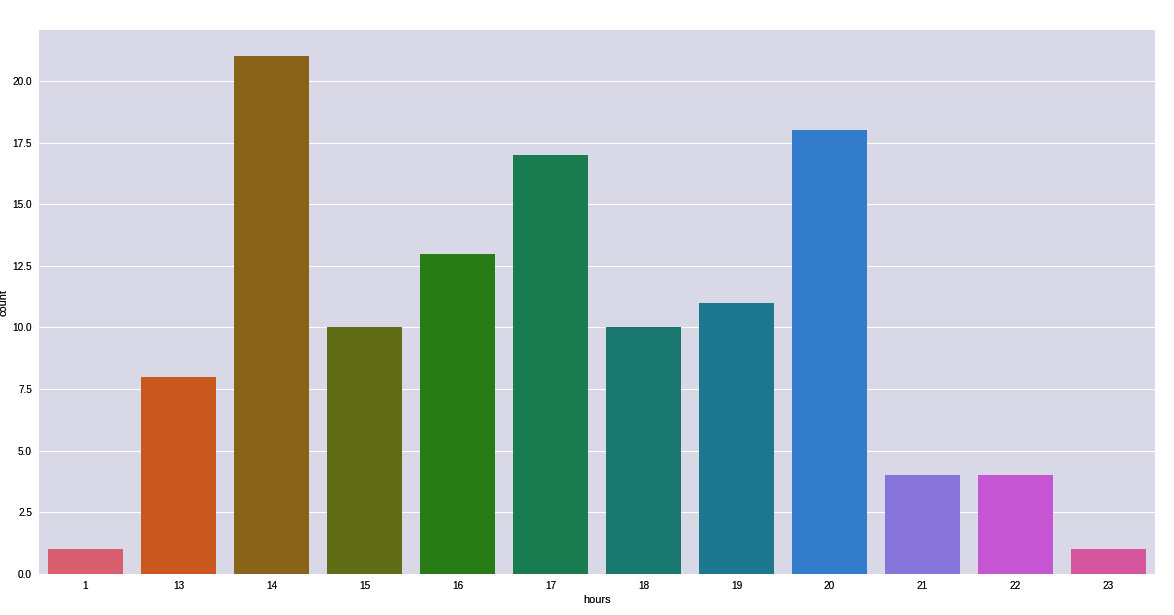To illustrate how location intelligence is applied in a real-world application, we will take as an example Foursquare check-ins. Foursquare initially started in 2009 as a social platform to collect user check-ins and provide guides and search-results for its users to recommend places to visit near the user's current location. However, recently, Foursquare repositioned itself as a less social platform to a location intelligence company. The company describes itself as a "technology company that uses location intelligence to build meaningful consumer experiences and business solutions" and claims the following:
"If it tells you where, it's probably built on Foursquare."
In its anonymized and aggregated trends of check-ins in physical brand locations, Foursquare provides insights and metrics that were not easily available before. Take, for example, the loyalty of customers, frequency of their visits, brand losses, and profits. This allows analysts and brands to understand their customers, reveal demographic insights and track patterns of customers, and look into and understand competition brands. To illustrate how powerful location intelligence is, let's explore a subset of Foursquare data in NYC. We will use this dataset later in Chapter 3, Performing Spatial Operations Like a Pro, but for now let's look into what it consists and how location intelligence is derived from it.
The NYC Foursquare check-in dataset has 10 months' worth of data spanning from April 12, 2012 to February 16, 2013.
Source: NYC Foursquare Check-in dataset first appeared in Fine-Grained Preference-Aware Location Search Leveraging Crowdsourced Digital Footprints from LBSN, Dingqi Yang, Daqing Zhang, Zhiyong Yu, and Zhiwen Yu, proceedings of the 2013 ACM International Joint Conference on Pervasive and Ubiquitous Computing (UbiComp 2013), September 8 to 12, 2013, in Zurich, Switzerland.
The following table shows the first five rows of the data and consists of eight columns with a unique UserID and VenueID. Both of these features are anonymized for privacy issues; VenueCategoryID and VenueCategoryName indicate aggregated types of business. Here, we have more than 250 business types, including a medical center, arts store, burger joint, hardware store, and so on; Latitude and Longitude columns store the geographic coordinates of the venues.
The last two columns indicate the time of the check-in:
Foursquare data: first five rows
Here, we have the first five rows of the Foursquare data. In this chapter, we will only look at the data from a wider perspective. The code for this chapter is available, but you do not need to understand it right now. We will come to learn the details of reading and processing location data with Python in the next chapters.
So, what kind of location intelligence can be derived from this type of data? We will cover this from two broad perspectives: the user/customer perspective and the venue/business perspective.



 Free Chapter
Free Chapter




